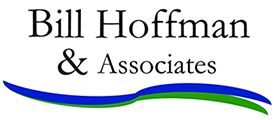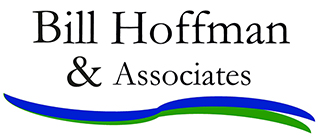Published at:
If you head a nonprofit, you probably tend to spend most of your time and energy on working to make your organization the best it can be. You want to fulfill that mission, and there never seems to be enough hours in the day (and nights) to accomplish everything you want to. Yes, you have good staff and a supportive board, but still it seems that your days are filled with e-mails, phone calls, meetings, and rushing from one place to the next. Technology, which is supposed to ease the burden, makes you available 24/7, demanding quick responses and eliminating time for reflection and recharging.
 With all the effort you’re putting into making your organization better, how much have you spent on making yourself better? The reality is that a better you will be a more effective leader and will likely result in even greater results for your organization as well as greater self-satisfaction. Here are five simple strategies that will help.
With all the effort you’re putting into making your organization better, how much have you spent on making yourself better? The reality is that a better you will be a more effective leader and will likely result in even greater results for your organization as well as greater self-satisfaction. Here are five simple strategies that will help.
Get a Mentor
Mentors are not just for young, developing professionals; they’re for all of us. Everyone, especially a leader of an organization, needs a trusted friend who knows you well enough to give you frank feedback. A mentor is someone who will listen to your challenges and problems but will do more than empathize. He or she will give you some straight talk about what you may be overlooking or dynamics that you may not be aware of. This kind of communication requires a tremendous level of trust and candor. It can’t come from an employee who reports to you or a board member who is your boss.
It takes effort to develop the relationships that lead to great mentoring, but the payoff is worth it.
Engage in a Professional Association
Don’t just join up with an association or group sharing similar goals and allowing you to network; really engage in that organization. Attend the meetings, volunteer to help with programs, or even serve as an officer. You’ll be amazed at the return on this investment of your time. You’ll learn things that aren’t part of the group’s presentations or newsletters. No matter how senior you are or how large your organization is, there are opportunities to learn new tricks from the smaller (sometimes more entrepreneurial) members of the group. Virtually every nonprofit segment has an appropriate association either locally, regionally, or nationally (and often all three). Ask your colleagues; they’re probably already members.
Read!
I’m constantly impressed with the quality of work published on leadership, management, nonprofits, development, etc. These resources present tremendous opportunities to improve yourself at your own pace and on your own time. To make sure that you’re reading the highest-quality books, ask around—especially your board members. Many of my best ideas have come from books that were not specifically targeted to nonprofits but whose themes certainly applied. And don’t forget the books that will stretch our concepts of philanthropy and what impact it can have (e.g., Do More than Give, by Crutchfield, Kania, and Kramer). Although we may not all have the resources their examples have, the concepts are applicable on all scales.
Subscribe!
You’re already reading GuideStar’s Newsletter—excellent start! There is a huge variety of very good online resources. Even if you don’t have time to read many books, you certainly can take advantage of online resources, which come in smaller bites. I find value in receiving newsletters, as they prompt me on a regular basis to click in and read some of those great articles. Experiment with which newsletters are most valuable for your needs and be quick to use the unsubscribe option if the content is not what you need. Keep your reading in-box lean so you know you’ve got worthwhile content to peruse as time permits.
Not sure which newsletters to sign up for? What a great question for the colleagues in your professional association and for your mentor; they certainly can share what they’ve found valuable.
Be a Lifelong Learner
Perhaps the most important thing you can do to develop yourself is to make a commitment to be a lifelong learner. Once you’ve established this mindset, you’ll find that you’re willing to invest time in yourself and your development. It’s not taking away from what you might be doing in your organization; it makes that time more valuable by making you more valuable as you increase your skill set and knowledge level.
Don’t leave this growth to chance; set goals for your professional and personal development during your annual goal setting—it’s easily as important as your other performance goals. Decide how often you’ll be meeting with your mentor (have coffee once a month? a phone call once a week?), make a commitment to engage in your professional association (and how often), set a goal for the number of work-related books that you’ll read each year, and know how much time or how many newsletters you can commit to each week. Above all, write down these goals and record what you actually do. Although you don’t want to spend too much time tracking these activities, you do need to organize your own self-development, and recording your progress is the best way to see if you’re doing what you’ve committed to do.
Will Rogers famously said, “Even if you’re on the right track, you’ll get run over if you just sit there.” Make sure that you’re sharpening your skills, and that’ll make sure that you keep moving forward!


